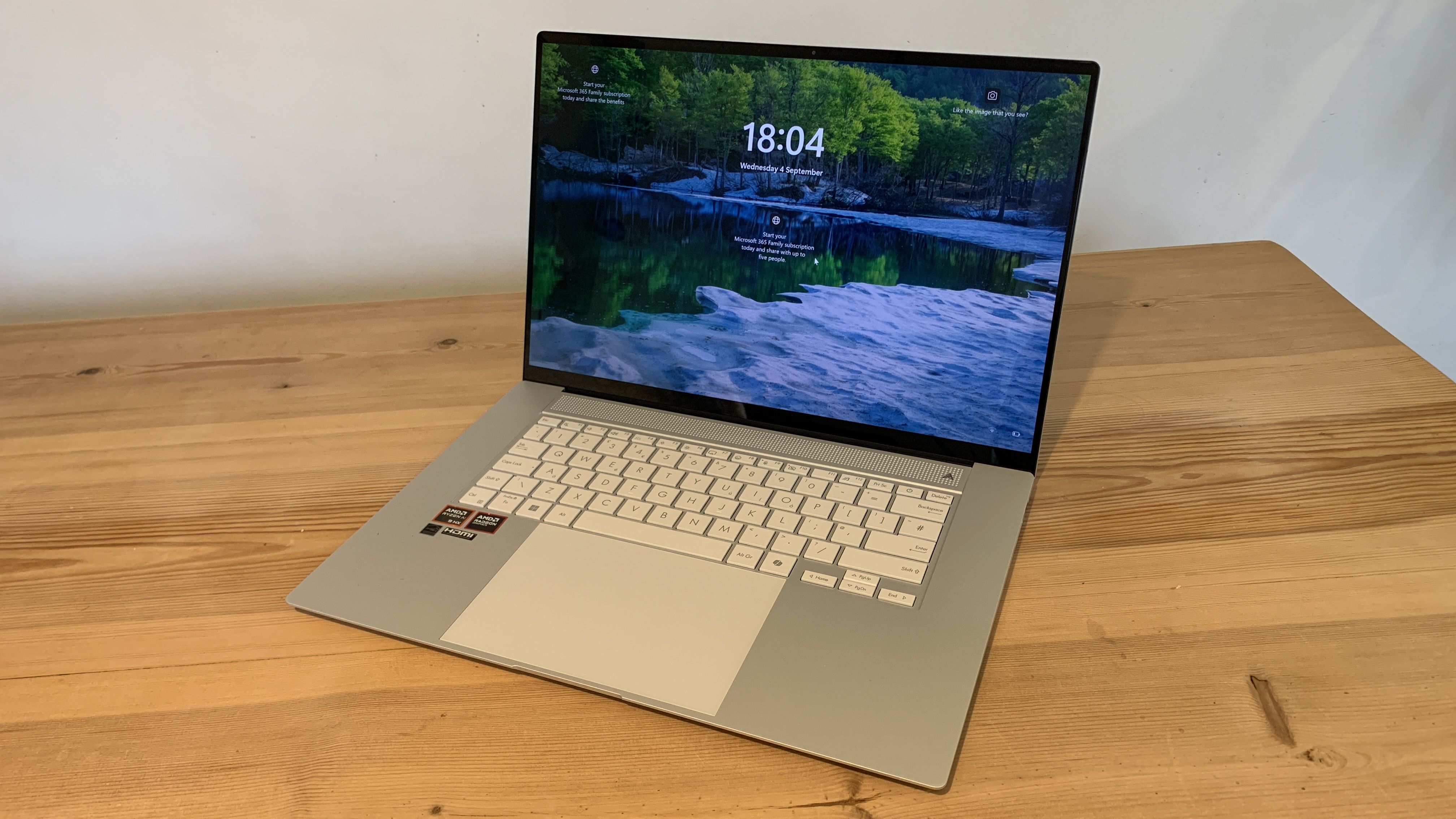
The ASUS Zenbook S 16 aims to be the laptop that redefines much of the laptop market, being both powerful and portable. Our review will explore whether they've managed to cement themselves among the leading pack.
To do this, ASUS has opted for AMD's Ryzen AI processor - a CPU designed for gaming, content creation, and AI. AMD's offering goes directly head-to-head with the latest and greatest that Intel and Qualcomm are producing. It's also an AI-powered CPU but whether it'll make it onto our list of the best AI laptops, only time will tell.
Alongside the latest AMD processor, ASUS have designed a laptop that is beautifully sleek and lightweight. The offering appears to boast the complete package - a truly compelling proposition.
ASUS is not without competition, though. The best laptops for graphic design and photo-editing deliver incredible speed, excellent battery life, and a slew of features to attract the masses.
I've been using the laptop for a little while now and carried out a number of tasks including word processing, web browsing, emails, and creative tasks. To benchmark the performance against other machines, I also ran tests using Cinebench, Geekbench, and Handbrake.
ASUS Zenbook S 16: Key specifications
Design & Build
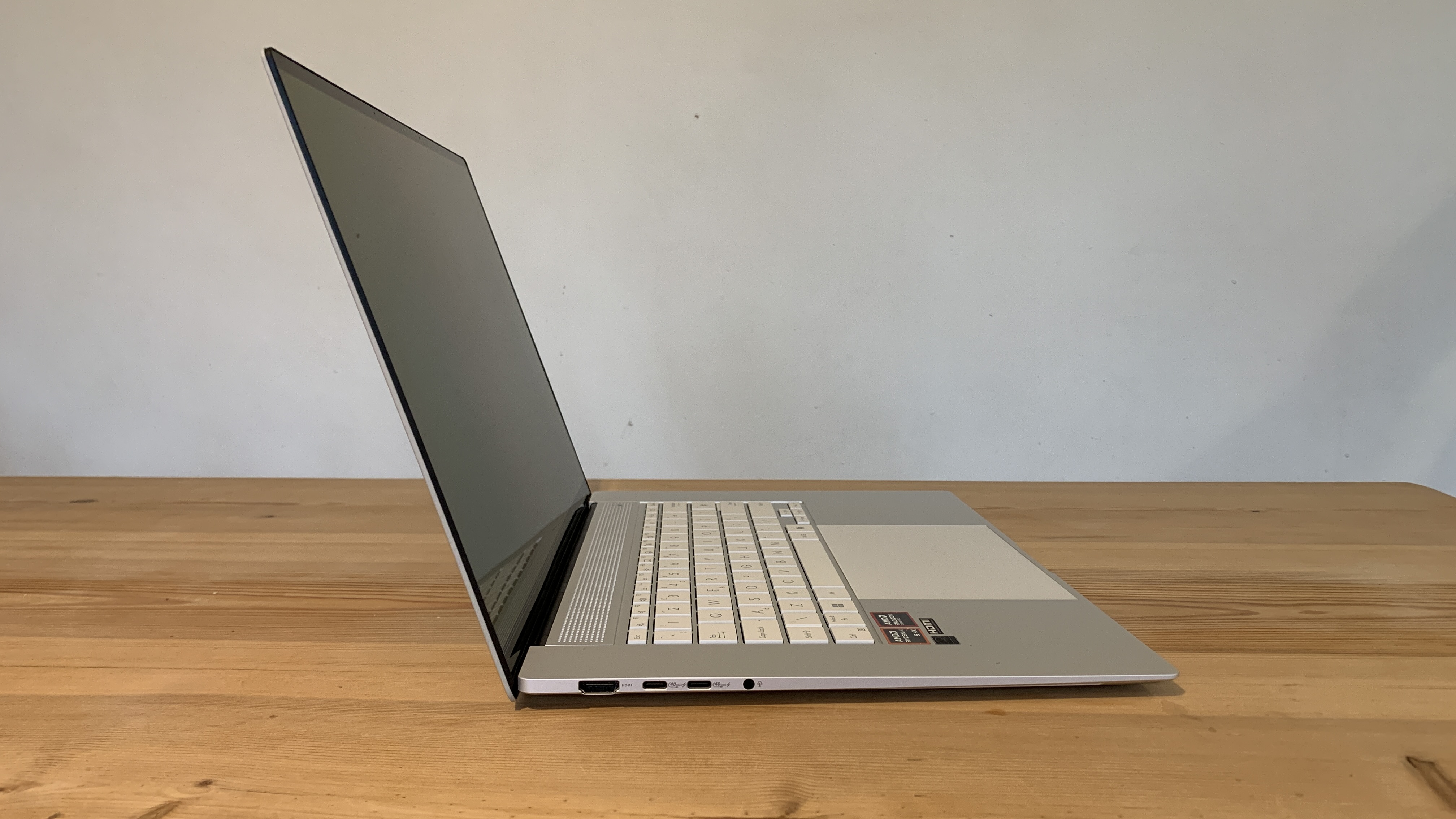
When you first look at the ASUS Zenbook S 16, you can't help but think they have absolutely nailed the design. It looks beautiful. My main machine is a MacBook Pro, which I think looks great, but the Zenbook S 16 definitely competes on an equal footing. This laptop is a testament to ASUS' commitment to design excellence.
Its compact form factor and minimal weight make it perfect for carrying around with you, something that is not guaranteed for all 16-inch laptops. Its sleek aluminium case gives it a seriously premium aesthetic and the distinctive lines and attention to detail set it apart from the competition.
The 16-inch OLED display looks amazing and, thanks to the minimal rim, goes as close to the edges of the laptop as you would want. The hinge is responsive enough to make sure you don't have to grip the display too hard when opening and closing—an essential trait for a portable laptop.
One of the other main components of any laptop is the keyboard and trackpad. These have been designed for comfort and efficiency, with ASUS succeeding at both. The keyboard is small enough to not take over but spacious enough to provide a satisfying typing experience, even for longer periods of time. The touchpad is a little larger than it probably needs to be but it's central to the keyboard, which is nice to see.
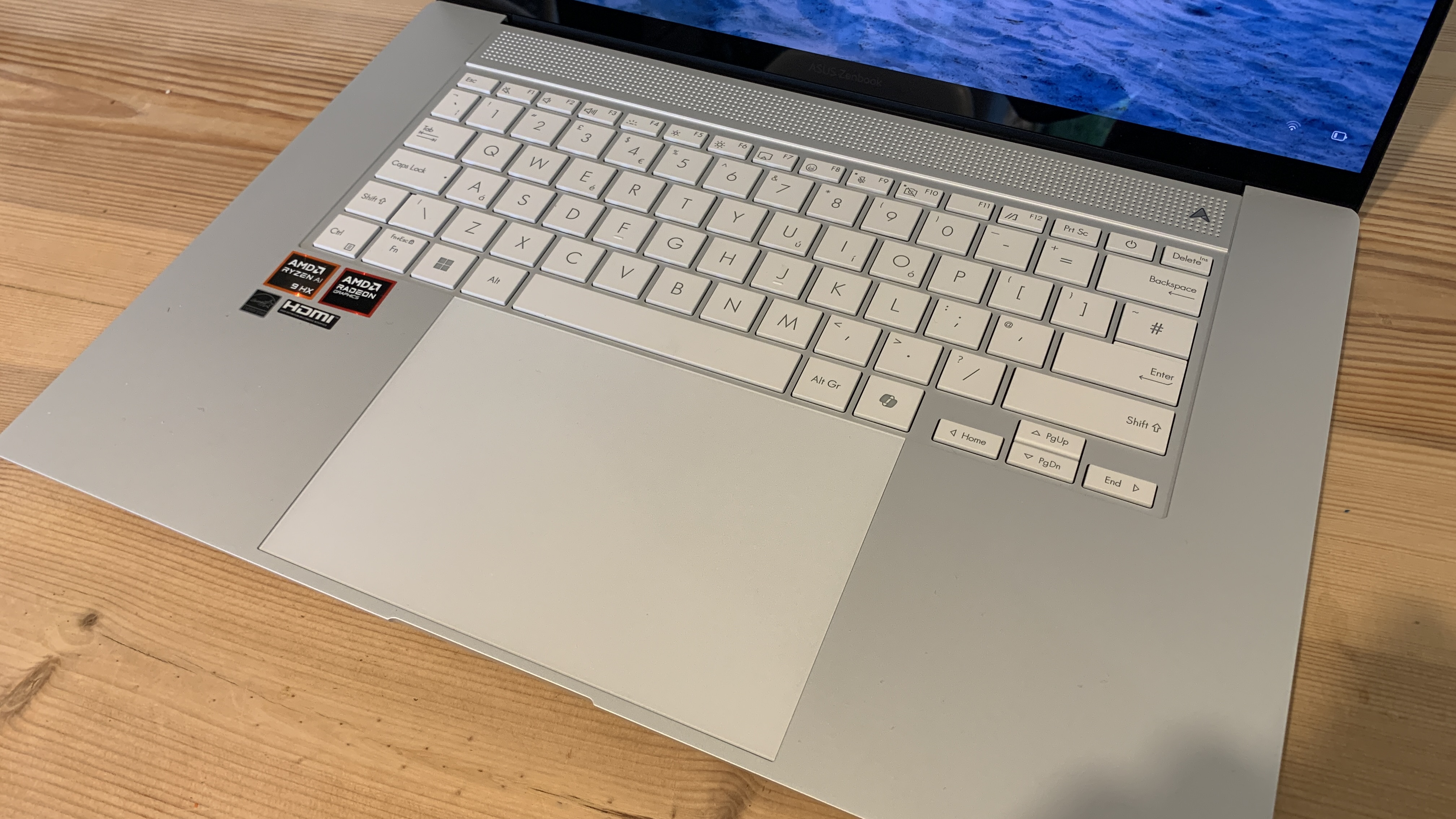
Besides the look and feel, ASUS has packed in a range of connectivity options, including USB-C and USB-A ports. These ensure fast data transfer and the power delivery that modern users require. There is also an HDMI output, which isn't commonplace on a lot of laptops. This port helps users connect their laptop to an external monitor and create a more flexible working space.
Creatives will be glad to see the integrated SD card reader, especially those working in photography and videography. All of the ports are located to the left and right sides of the device, leaving the rear clear. Personally, I prefer to have the power port, at the very least, out of the back because this helps keep my desk tidier.
The Zenbook S 16 is a well-designed and great-looking laptop. The stunning display, connectivity options, and keyboard provide everything that creatives are looking for.
Features & Performance
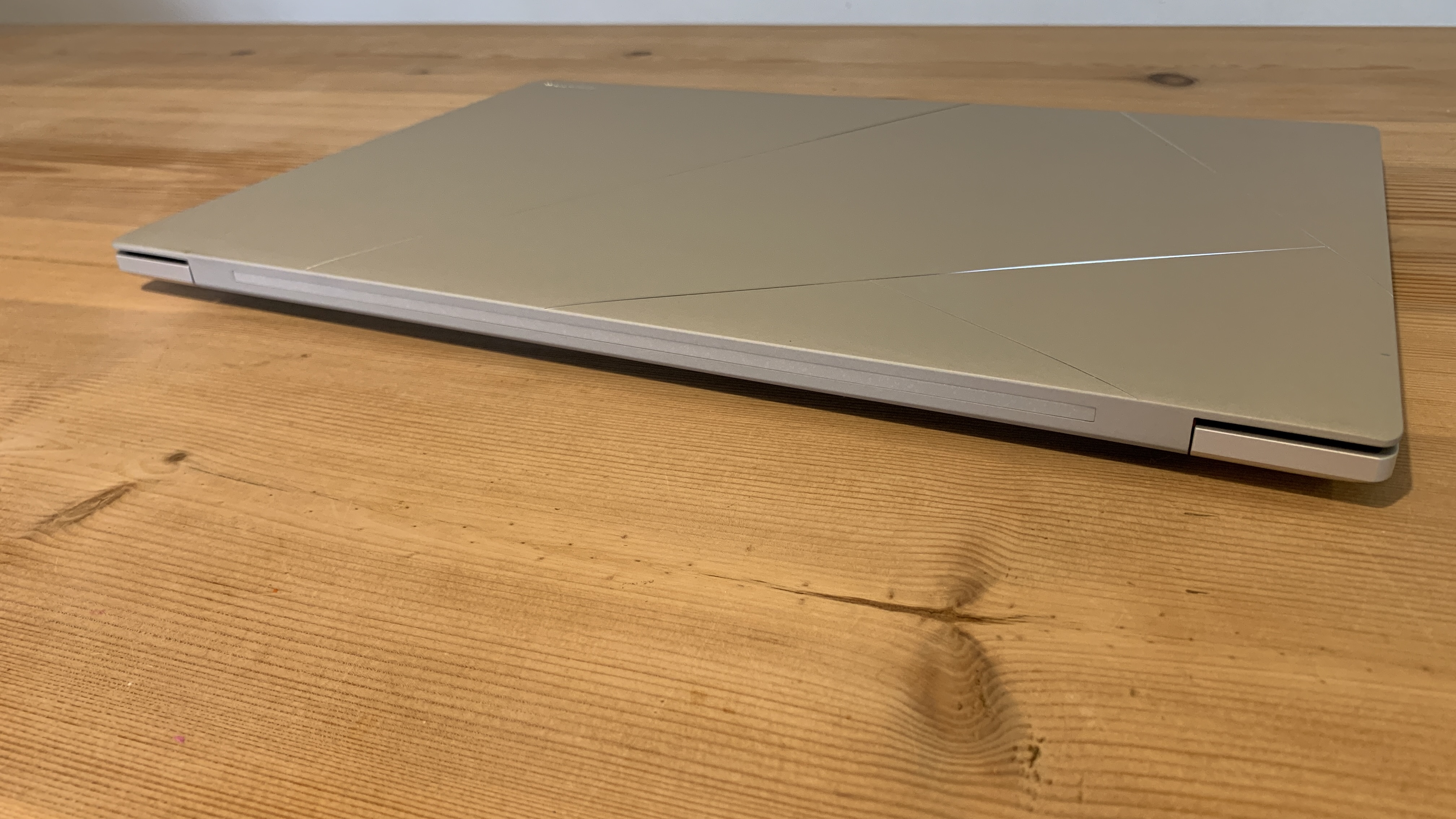
The Zenbook S 16 performs very well when it comes to the keyboard, trackpad, portability, and efficiency. At this stage, you're probably more interested in hearing how the laptop got on with regards to the performance of the CPU and GPU. We'll come onto the battery life later on.
The AMD Ryzen AI 9 365 Processor should be up there with the best from Intel and in many ways it is but not across the board. We primarily use Geekbench and Cinebench to benchmark laptops, with the former mimicking everyday workloads and the latter testing pure raw throughput.
This laptop performed above average for everyday use but below professional needs for 3D rendering. Let's start with what didn't go well before moving on to more positive news. The Cinebench CPU Single-Core score was 77 and the Multi-Core 827. By way of a little comparison, the ASUS ProArt P16 came out at 115 and 1,103, and the HP Omen Transcend 14 scored 105 and 866, respectively. The Zenbook S 16 is therefore less suited to 3D workflows than some more graphic-processing-ready rivals.
Now let's look at the Geekbench tests. The single-core score was 1,780 and the multi-core score was 11,811. Those scores outperform both the MSI Prestige and the Surface Go 4. These scores show how ideally suited this laptop is for everyday use, including general creative tasks, word processing, and web browsing, but not 3D rendering.
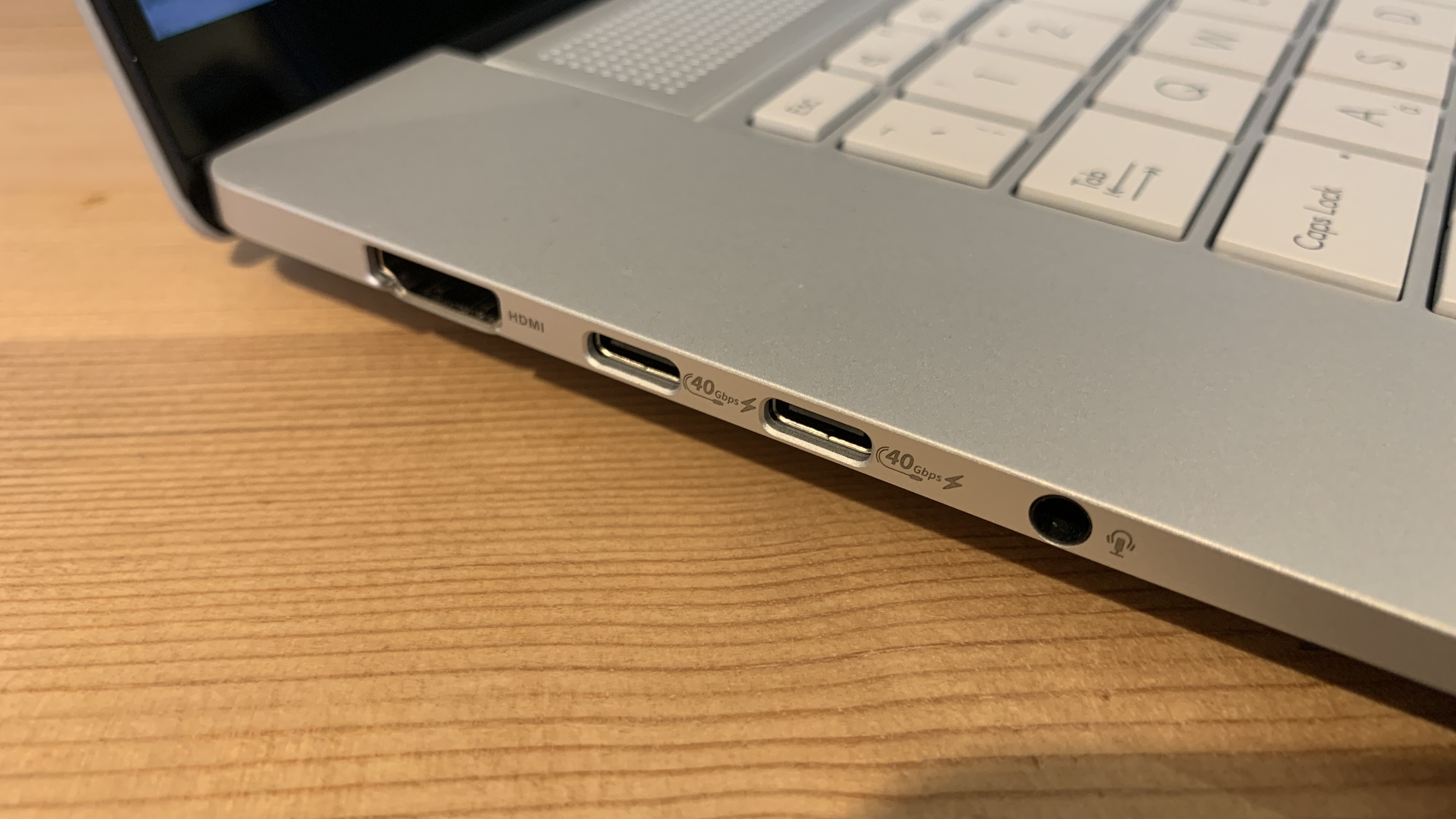
Video editors will be pleased to see the laptop was able to transcode a 10-minute, 34-second 4K video to 1080p in only 4 minutes and 18 seconds. This puts it on par with the MSI Titan 18 HX and demonstrates its suitability for video work.
The battery life isn't incredible and will struggle to last a full day under intensive workloads but the device and charger are portable enough to make it easy enough to travel with both. The fans perform well, with minimal noise produced. You won't have any problems working in shared spaces, as can be the case with other laptops.
In conclusion, the Zenbook S 16 is a well-rounded laptop that offers a balance of performance, efficiency, and portability. I would choose an alternative laptop if your mainstay is 3D rendering but for everyday creative professionals, the Zenbook S 16 is well worth consideration.
Price
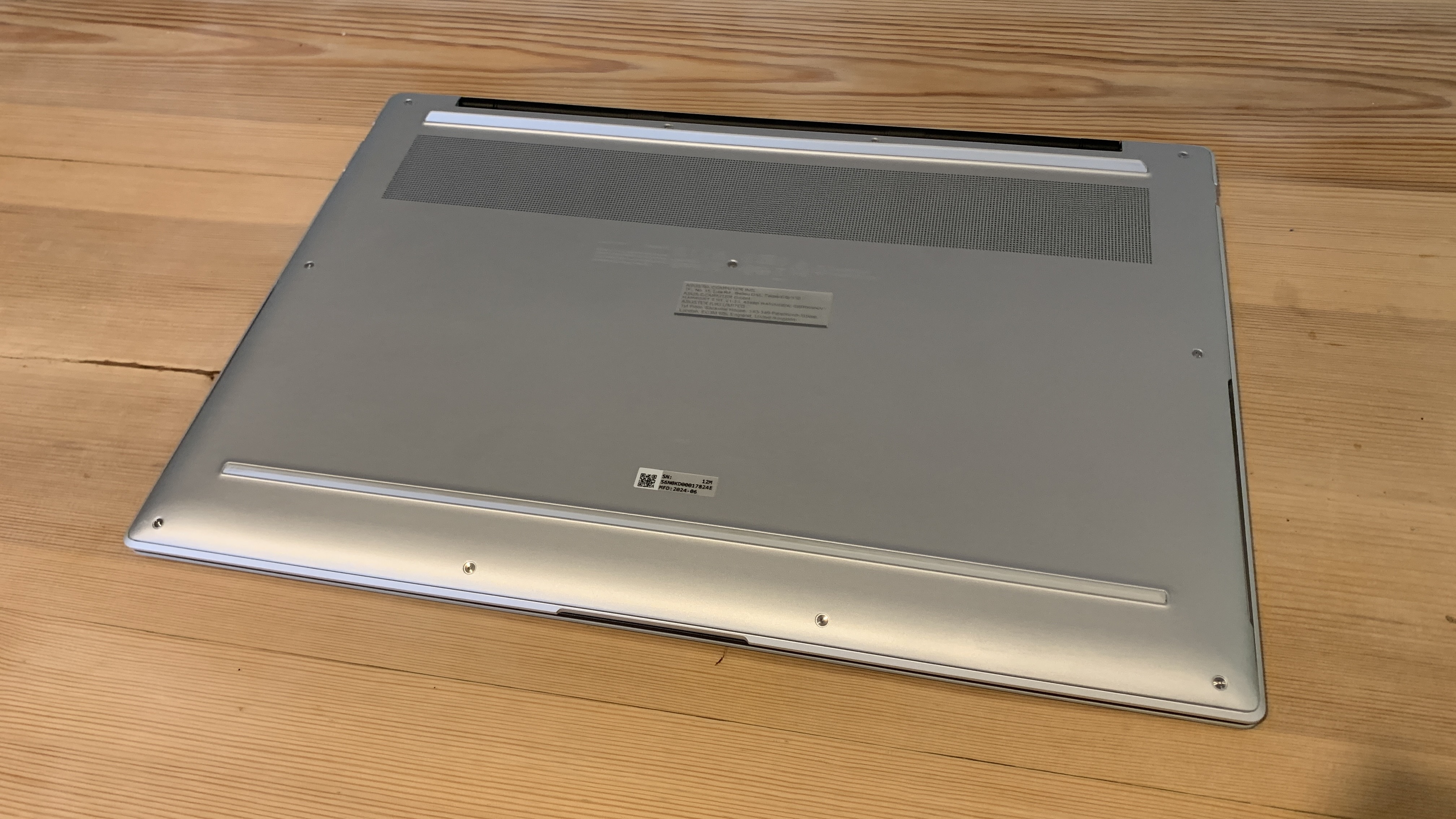
The ASUS Zenbook S 16 retails at £1,599 in the UK and $1,699.99 in the US. For the money you'll get an AMD Ryzen AI 9 HX 365 CPU, an AMD Radeon 880M GPU, 1 TB SSD, and 24 GB of RAM.
At this price, the Zenbook S 16 retails for just a little lower than the MSI Prestige 16 AI and the HP Omen Transcend 14.
Who is it for?
Our benchmark tests showed us that the ASUS Zenbook S 16 is a good fit for almost all creative professionals except 3D visualisers. You'll want to explore other options if you need rapid 3D rendering.
The Zenbook S 16 is particularly good for exporting videos so video editors will want to throw this laptop in for consideration. Also, any user who demands portability and a decent display size will get exactly what they need with this laptop. It's thin and lightweight, making it ideal for throwing in a big and pitching up in a new location.
Should I buy the Asus Zenbook S 16?
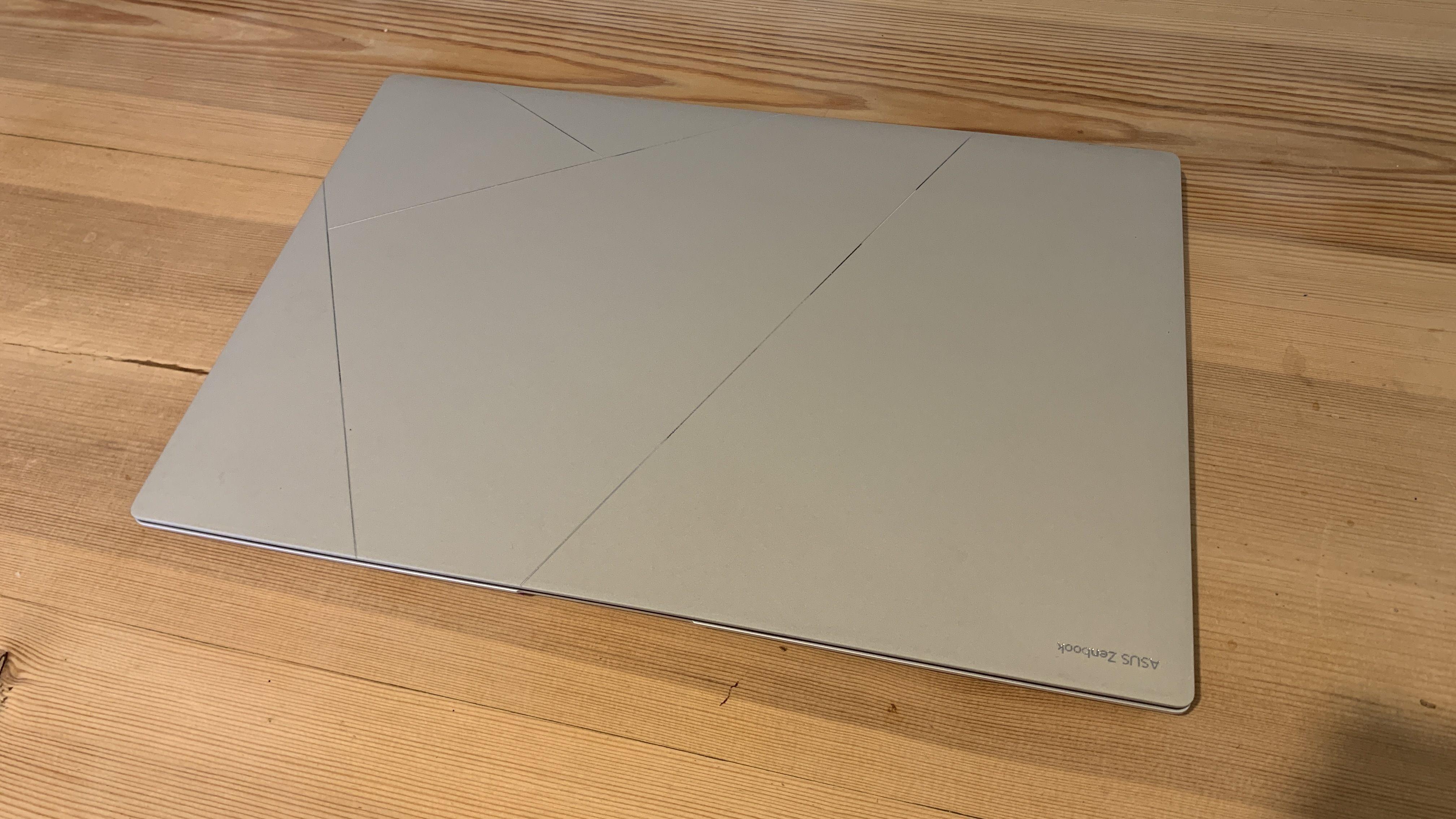
Buy it if:
- You want a great looking laptop
- You're a general creative
- You need a portable device
Don’t buy it if:
- You're into 3D rendering
- You need a 4K display
- All you care about is gaming







